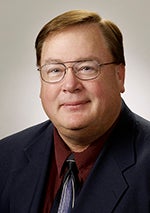When temperatures plummet, how do schools decide to close?
Published 10:59 am Tuesday, January 28, 2014
Austin Superintendent David Krenz and Austin Public Schools administrators have a checklist to run through each time the weather turns bad.
If it’s cold, administrators discuss transportation issues and check the National Weather Service in La Crosse for temperature estimates.
“When it comes to cold, we look at static temperatures and wind chill,” Krenz said.
How district officials make the often-difficult decision depends on a number of factors. Sometimes it has to do with diesel. At other times it’s about gloves.
The bottom line, Minnesota school administrators say, is safety: evaluating the risk of frostbite to students who stand at the bus stop or walk to school.
“Once it gets to a certain wind chill and air temperature chill, the children are in physical danger,” said Julie Schultz Brown, director of communications for St. Paul Public Schools, which canceled school Monday. “It’s just too dangerous to put it to chance for a young child.”
The call was a different one for superintendent Sherri Broderius in the Atwater-Cosmos-Grove City district about 90 miles west of the Twin Cities.
With a wind chill of minus 30, Broderius started school two hours late, so busses could run in the daylight. That came after she cancelled classes the day before because of blizzard conditions.
When massive amounts of snow is predicted, Krenz and other Austin administrators check roads and speak to local busing companies to determine how safe students will be when traveling to school.
“There were a couple of times last year when Albert Lea closed due to the snow, but we didn’t because we didn’t get hit with the snowfall,” Krenz said.
When evaluating the risk of frostbite, they consider the following:
-How many minutes of exposed skin outside will it take for a chance of frostbite?
-Do a large number of students rely on bus transportation and wait at the bus stop, or walk to school?
-Can the district rely on buses, which run on diesel fuel, to start on time so that children are not waiting longer at the bus stop? Are the buses old and worn, or newer and more reliable?
-Do students have enough warm clothes, hats, scarves, gloves, heavy jackets, and can cover exposed skin to prevent frostbite?
– Are there icy roads or other snowy conditions that will add to the potential that children in extreme cold could be waiting longer?
For Austin, temperatures must reach 30 below zero, with or without wind chill, before school closes. That number comes from NWS meteorologists, according to Krenz. The NWS told district officials students can get frostbite or other complications to exposed skin in less than 30 minutes, which means students who walk or must wait a long time for buses can come under risk.
School district officials also must consider other factors, among them student nutrition and how school cancellations will affect families. Some parents may have to miss work because their children are home, and students who depend on eating breakfast and lunch at school may not have food at home.
But when classes are canceled, that gives teachers less time to prepare students for state testing.
If schools cancel too many hours, they may have to hold make up days later in the school year. Because there have already been several days with schools closed this winter, many districts are close to the limits of missed days or hours before they have to start making up days.
Austin won’t have to make up days yet. The district has canceled classes three times this year, and though the Austin Public Schools board may consider more school if any more days are missed, Krenz said the district is well above the threshold for classroom instruction hours, which is the measurement for required school days in Minnesota.
The Minnesota Department of Education is weighing how the time off from school will affect students when they take standardized tests this spring.
Mark Bollinger, deputy chief operations officer for Minneapolis Public Schools, said he talks to a variety of departments to evaluate the effect of canceling school or remaining open: maintenance, transportation, emergency management, safety security, nutrition, athletics, academics, and facilities. After weighing the risks, he makes a recommendation to the district’s chief operations officer. He also consults with other school districts and the city.
Sometimes, districts will use past school cancellations as a compass.
The decisions are largely left up to local school districts and their leaders. Not all districts are the same, Bollinger said.
Some communities, like Austin, face difficulties with new residents not used to the school calendar or residents in poverty who don’t have access to email, text alerts or phone messages from the district. Krenz said several elementary, middle and high school students have come to school over the past couple weeks when classes were canceled, which means they put themselves at risk in the elements. Austin Public Schools announced Friday it would cancel Monday classes so students could let parents know right away and avoid that.
“It’s all about the students’ safety,” Krenz said.
Bollinger said the decision is always a difficult one. He evaluates three perspectives in decision-making: situations, risks and opportunities.
“Do we make mistakes? We do,” Bollinger said. “We strive very hard not to. But in our efforts to give proper notice to parents, sometimes we take the best information we have at the time and make a decision. And I would hope to tell you that 98 percent of the time, 99 percent of the time, it’s a good decision.”
—Minnesota Public Radio contributed to this report.






